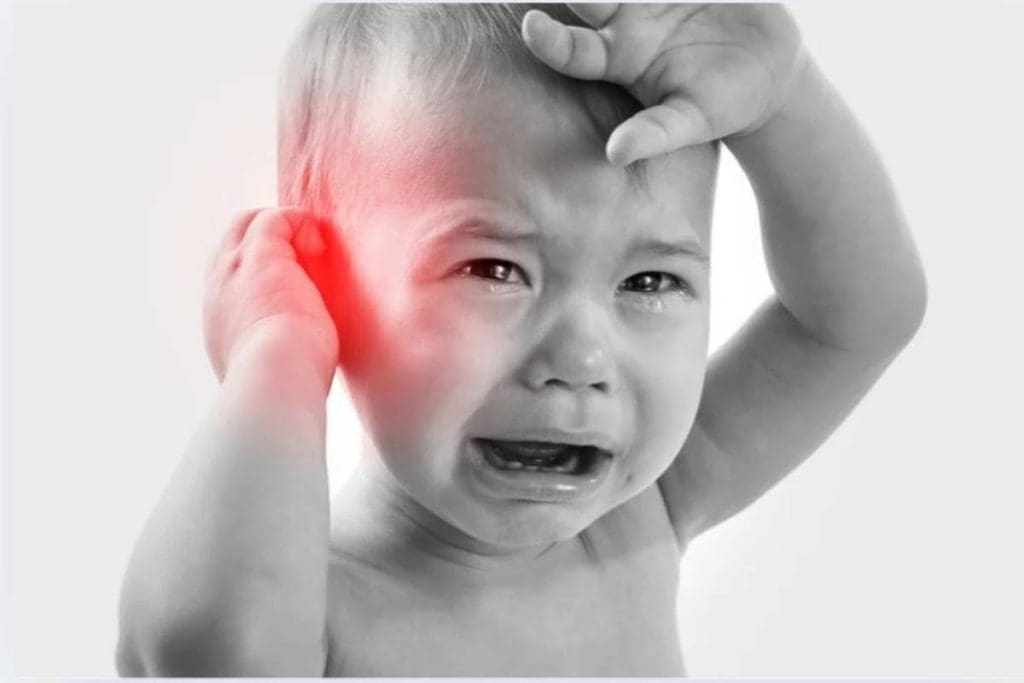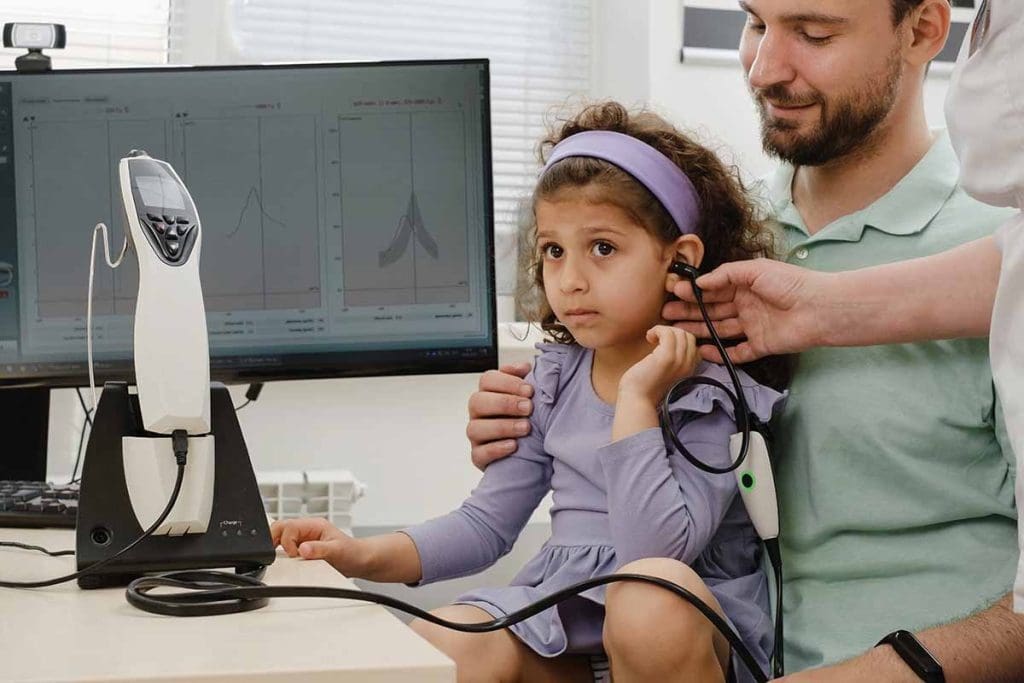Last Updated on November 14, 2025 by

Seeing your child’s ear turn red can worry you. At LivHospital, we know how important it is to find out why. A red ear in a child can happen for many reasons, like changes in temperature or minor injuries.
Red Ear Syndrome (RES) is a rare condition. It makes one ear turn red, warm, and hurt. These episodes can start from heat, cold, stress, or even touch. RES is linked to migraines and neurological issues, but other things like infections, allergies, or skin problems can also cause ear redness.
It’s key to know what might be causing your child’s ear to turn red. We’ll look into these reasons and how to handle them. This will help keep your child healthy.
A red ear in children is a common issue. It can come from many everyday things. Often, a child’s ear turns red because of things we can easily spot and handle.
Temperature is a big reason for red ears in kids. When it’s too hot or too cold, the blood vessels in the ear change. This can make the ear look red and feel hot.

Pressure or minor injury can also make a child’s ear red. This might happen if they lie on their ear or get a small injury. The pressure can irritate the ear and make it look red and feel hot.
How a child sleeps can also affect their ear. If they sleep on their side, it can press on their ear. This can make the ear red. Making sure they sleep comfortably can help.
Knowing why ears get red in kids helps parents and caregivers. If the redness doesn’t go away or is with other symptoms, see a doctor.
Infections are a big worry for red ears in kids. Conditions like otitis media are common. They can cause mild redness or severe pain.

Otitis media is a common infection in kids. It happens when bacteria or viruses infect the middle ear. This leads to inflammation and fluid buildup.
The eardrum can become red and bulge, causing pain. Symptoms include ear pain, fever, and hearing loss. Some kids may also have discharge or fluid leakage.
If not treated, otitis media can cause hearing problems or mastoiditis.
Otitis externa, or swimmer’s ear, is an infection of the outer ear canal. It’s often caused by water exposure, leading to bacterial or fungal growth. This makes the ear canal red, itchy, and painful.
Symptoms include itching or redness in the ear canal, discomfort, and discharge. Treatment involves antibiotics or antifungals, along with pain relief.
Other infections, like cellulitis or abscesses, can also cause ear redness. Cellulitis is a bacterial skin infection. An abscess is a pus collection in the ear. Both need quick medical attention to avoid complications.
If your child has persistent or severe ear redness, pain, or discharge, see a doctor. A healthcare professional can diagnose and treat the cause. This helps to ease symptoms and prevent damage.
Red Ear Syndrome is a rare condition that causes ears to turn red and feel hot. It’s often linked to migraines and other neurological issues. Scientists are trying to figure out why it happens, but they’ve found some clues.
Red Ear Syndrome (RES) makes one or both ears turn red and hurt. It’s tough for kids and parents to deal with. Research shows RES is often tied to migraines and other neurological conditions.
The symptoms of RES can differ, but they usually include:
There’s a strong link between Red Ear Syndrome and migraines in kids. Studies show kids with RES often have migraines or other headaches. This suggests RES might be part of a bigger group of neurological issues.
“The association between Red Ear Syndrome and migraines highlights the complexity of neurological conditions in children and the need for comprehensive care.”
Several things can set off Red Ear Syndrome, including:
Knowing what triggers RES is key to managing it. By figuring out and avoiding these triggers, parents and doctors can help lessen the problem.
We need to tackle Red Ear Syndrome in a full way. This means understanding its ties to migraines and other neurological issues. By doing this, we can help kids with this condition more effectively.
Skin conditions can really affect our ears, causing redness and discomfort. Many skin issues can lead to ear redness. It’s important to know about these conditions to manage them well.
Contact dermatitis happens when the skin reacts to an allergen or irritant. This can cause redness, itching, and sometimes blisters. In the ear, earrings with nickel or certain skincare products can be culprits. Identifying and avoiding the causative agent is key to managing contact dermatitis.
Symptoms of contact dermatitis in the ear include redness, itching, and swelling. It can also cause crusting or scaling. If your child shows these signs, seeing a healthcare professional is important for diagnosis and treatment.
Eczema and psoriasis are chronic skin conditions that can affect the ear. Eczema makes the skin dry and itchy, while psoriasis causes scaly, red patches. Both can be tough to manage, but gentle skincare routines and topical treatments can help.
For children with eczema or psoriasis in the ear, keeping the area clean is key. Avoiding triggers and moisturizing regularly can help reduce symptoms.
Allergic reactions to substances like nickel in earrings or certain materials in hearing aids can cause ear redness and discomfort. In severe cases, it can lead to swelling or discharge. If you think an allergic reaction is happening, consult a healthcare professional for advice on managing the allergy and preventing future reactions.
Understanding why your child’s ear is red is vital for treatment. By figuring out the cause, you can work with your healthcare provider to find a treatment plan. This plan should help alleviate symptoms and improve ear health.
Ear redness in kids can often be harmless. But, it’s key to know when to get medical help. Issues like Red Ear Syndrome, infections, and skin problems need quick and right care. This helps avoid serious problems and keeps your child comfortable.
If your child’s ear redness doesn’t go away or gets worse, see a doctor. LivHospital offers top-notch care for international patients. We focus on proven treatments for Red Ear Syndrome and ear infections.
It’s important to know when to get medical help for your child. If you’re worried about their ear redness, get professional advice. This ensures the best care for your child.
A red and hot ear in kids can happen for many reasons. It might be from temperature changes, physical pressure, or minor injuries. It could also be due to infections like otitis media or otitis externa. Or, it could be because of skin issues like contact dermatitis or eczema. Finding out why is key to helping them feel better.
Red Ear Syndrome (RES) is a rare condition that makes one ear red, warm, and painful. It’s not fully understood, but it’s linked to migraines and other neurological issues. For kids, RES can be scary because it’s unpredictable and can affect their daily life.
Yes, sleeping on their side can make a child’s ear red. This happens when the ear gets pressed against something. It’s because of the pressure on the ear.
Otitis media, or middle ear infection, makes the eardrum red and bulging. It causes ear pain, fever, and hearing loss. Doctors treat it with antibiotics. Sometimes, they put in tympanostomy tubes to help the ear drain.
To manage ear redness from skin conditions, treat the condition itself. Use creams or ointments to reduce swelling and itching. Also, avoid things that might make it worse.
Yes, RES episodes can be triggered by many things. These include heat, cold, stress, or even touch. Knowing and avoiding these triggers can help manage RES.
Yes, allergic reactions can make a child’s ears red. This can happen from things like nickel in earrings or certain skincare products. It’s important to find and avoid the allergen.
Being outside in extreme temperatures can make the blood vessels in the ear change. This can make the ear red and feel hot. It’s usually not serious.
Subscribe to our e-newsletter to stay informed about the latest innovations in the world of health and exclusive offers!